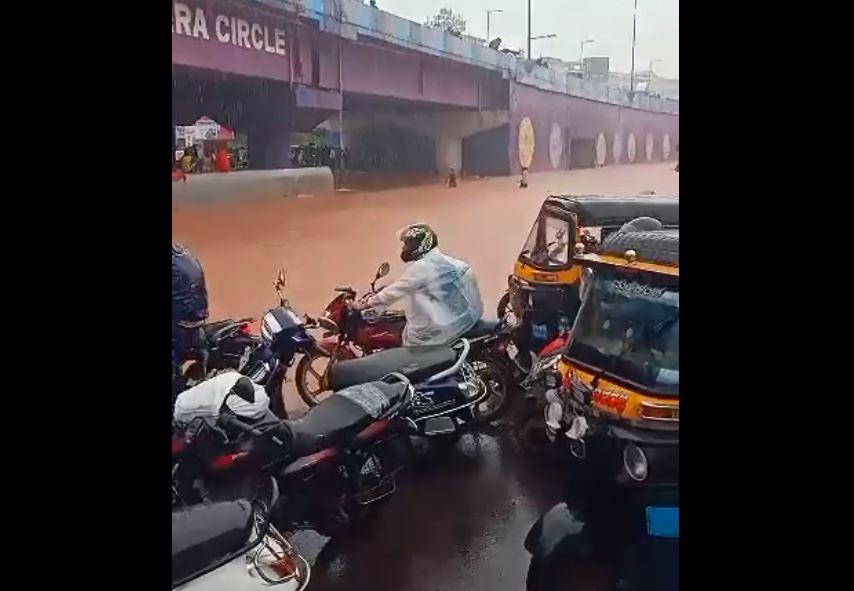Some residents attributed the flooding to Guru Purnima (a full moon day) on Monday, 3 July, which causes high tides in the sea.

Mangaluru rains
Heavy rains that lashed Mangaluru for the second day submerged several low-lying areas in the city, including the busy Pumpwell Road flyover area and the Kottara Chowki junction.
This caused prolonged traffic congestion on Monday. Tthe traffic police were deployed in waterlogged areas, and vehicles were redirected to alternative routes.
Due to the heavy rains, the district administration granted leaves to schools and colleges in the city on Tuesday.
The rainwater that inundated the Pumpwell flyover area reached knee height, blocking the main route towards Mangaluru.
Some vehicles got stuck in the water. Buses and other vehicles travelling from the Mangaluru city area towards Talapady, Tokkottu, and BC Road were stranded.
Some residents complained that the poorly planned urban infrastructure and rapid urbanisation had led to this situation.
Others attributed the flooding to Monday being Guru Purnima, a full moon day, the likes of which cause high tides in the sea. They said as a result of the high tides, the rainwater could not flow easily into the sea.
Mangaluru-resident former journalist Alvin Mendonca told South First that water logging happens very often during heavy rainfalls at both the Pumpwell flyover area and the Kottara junction, which is a low-lying area.
“But this time, the rainfall led to the flooding of areas like Hoige Baazar, Bendoor well, Kankanadi, Jetpu, and Jeppinamogaru,” he noted.
“Rapid urbanisation without planning and a real-estate boom are the primary reason for this flooding. Building sanctions and permissions are granted randomly by bureaucrats without any scrutiny,” he added.
“Earlier Mangaluru had natural rajakaluves (drainage, including for rainwater), and was surrounded by paddy fields. The rainwater would flow into these paddy fields, and then to these natural rajakaluves to rivers and sea. But that is not the case at present,” Mendonca said.
According to him, these paddy fields have become residential hubs with high rises and commercial buildings.
“The natural rajakulves do not exist at present, so the water has no place to flow now. In the recent past, after the introduction of Smart City projects, there was no planning for a drainage system, which is also a major concern in the city area. When you construct an apartment of 1,000 units, the drainage outlet should be proportional to it, but that is not the case,” Mendonca explained.
An official from the Karnataka State Natural Disaster Monitoring Centre (KSNDMC) told South First: “Mangaluru received heavy rainfall while Uttara Kannada district and Belagavi received moderate of rainfall.”
He added: “The monsoons have set in, and this rainfall pattern in Mangaluru is a little more than what was expected.
The official continued: “On Tuesday, rains recorded at Mundalli, Muttalli, Jali, and Belke — all in Uttara Kannada — and Shirur in the Udupi district were 75-84 mm of rain.”
Meanwhile, the India Meteorological Department (IMD) has predicted heavy rains for the next five days, with an orange alert in effect in Dakshina Kannada district till 7 July.
In the adjoining state of Kerala, a red alert has been issued for two districts while orange alerts have been marked for all other districts in the state.
(With PTI inputs)

May 16, 2024

May 16, 2024

May 15, 2024

May 15, 2024

May 15, 2024

May 15, 2024